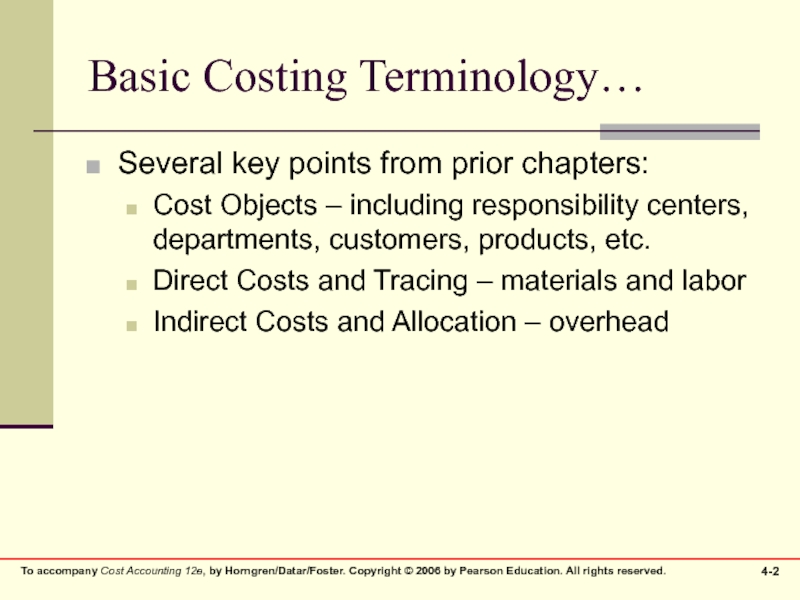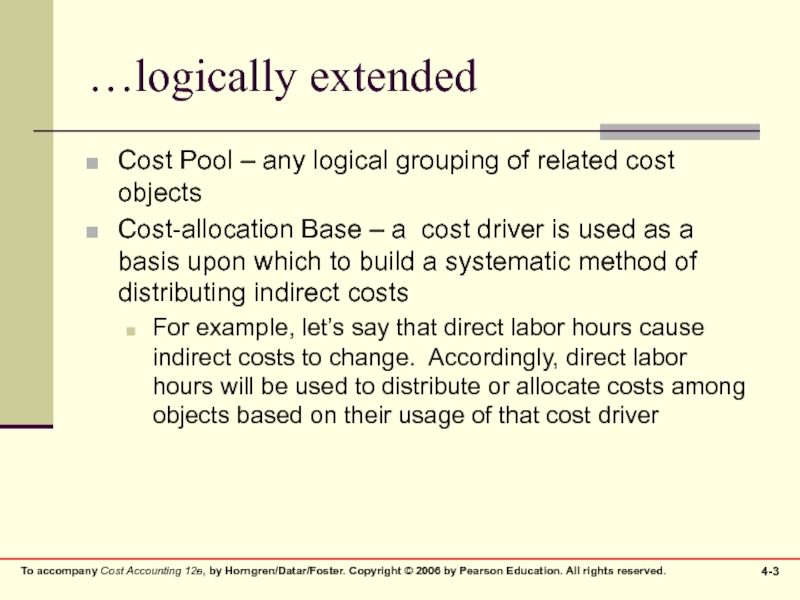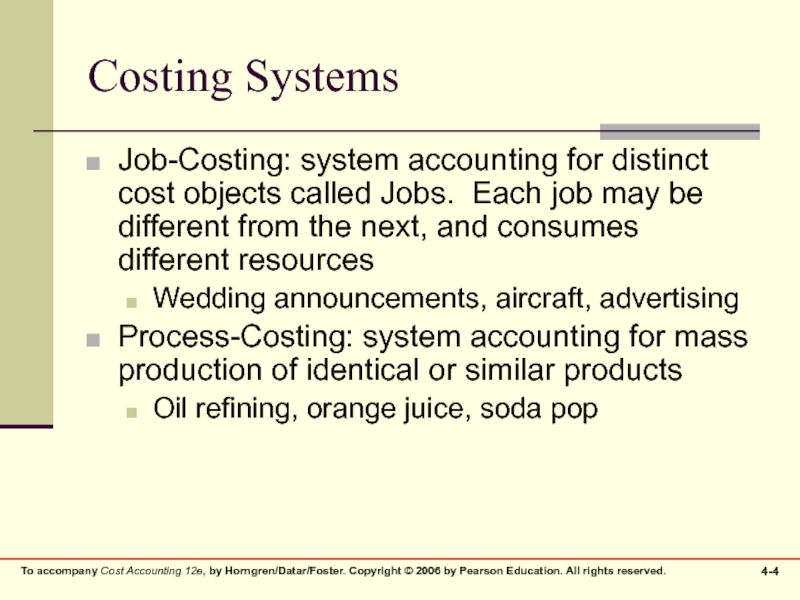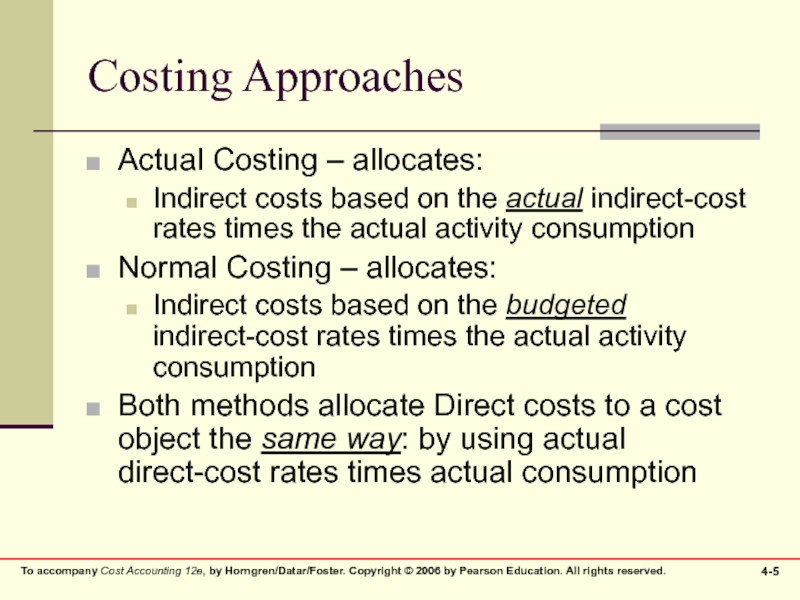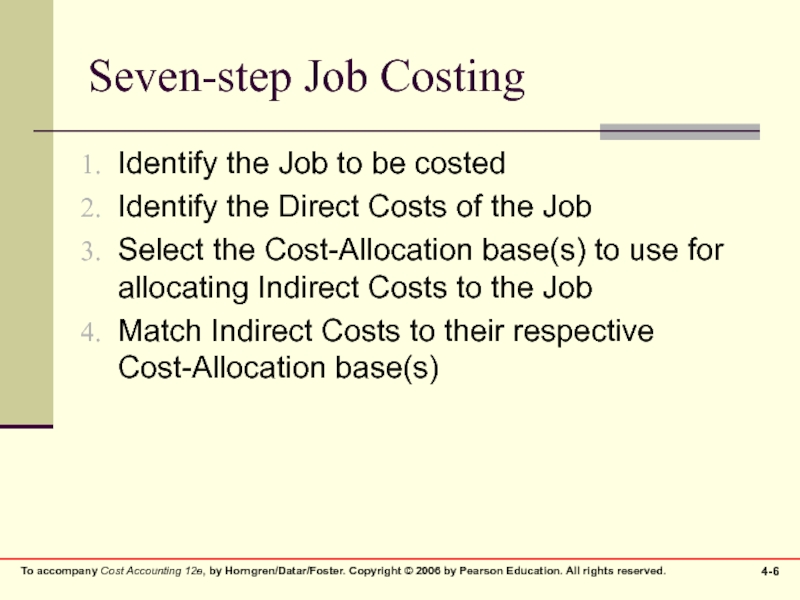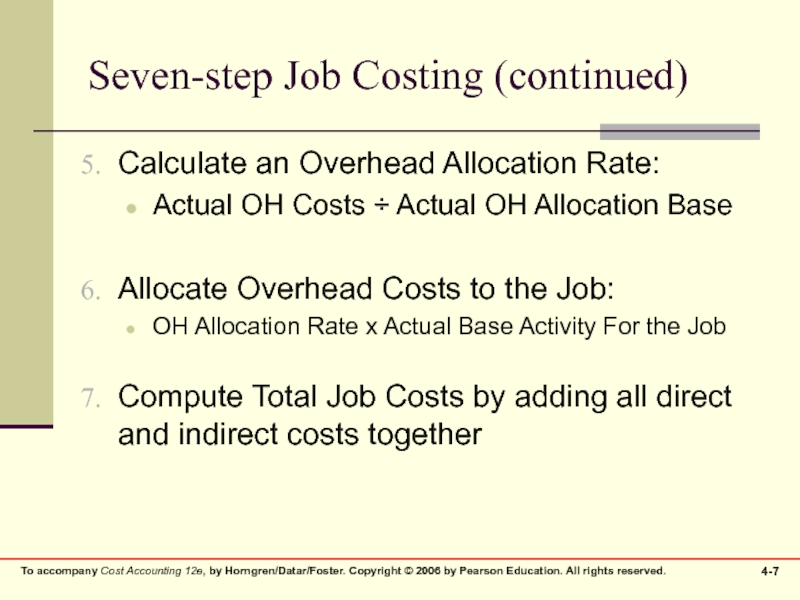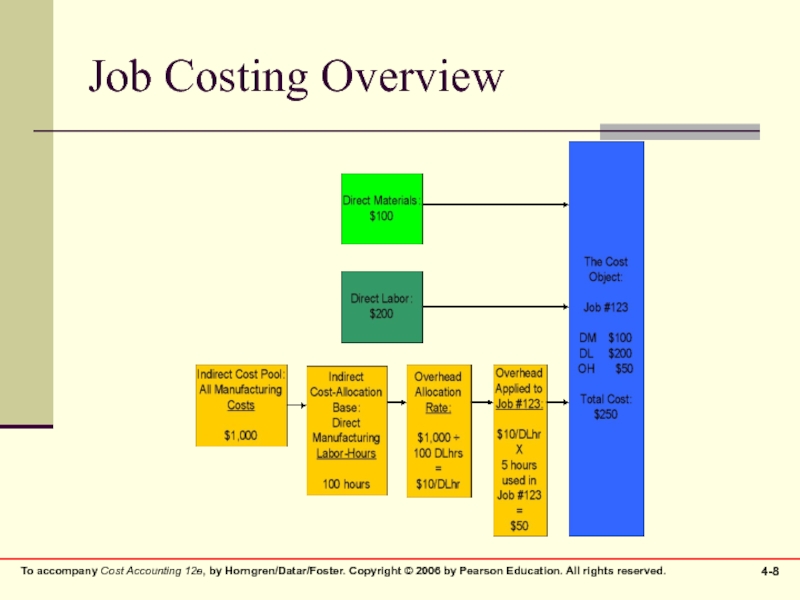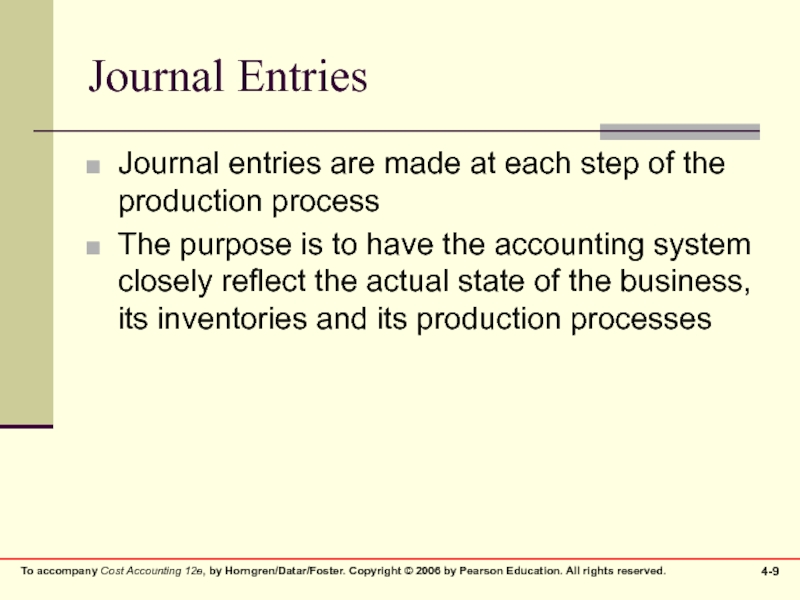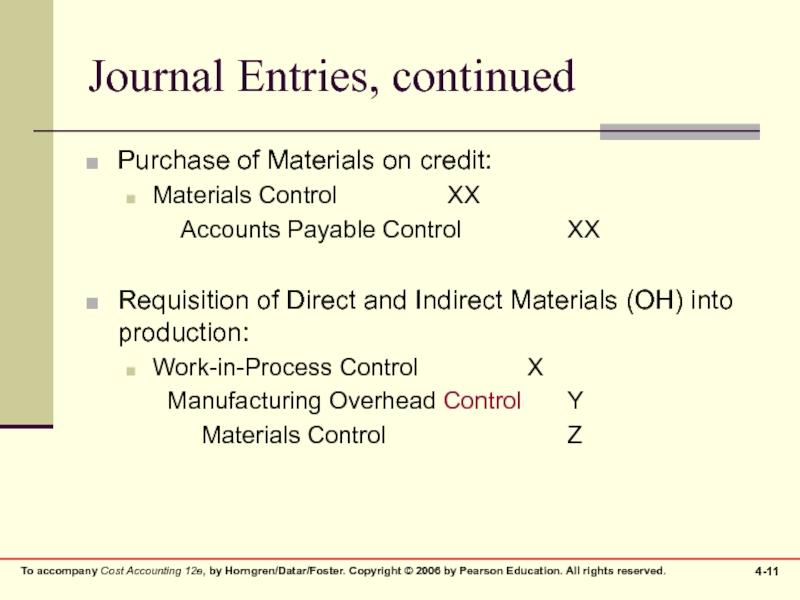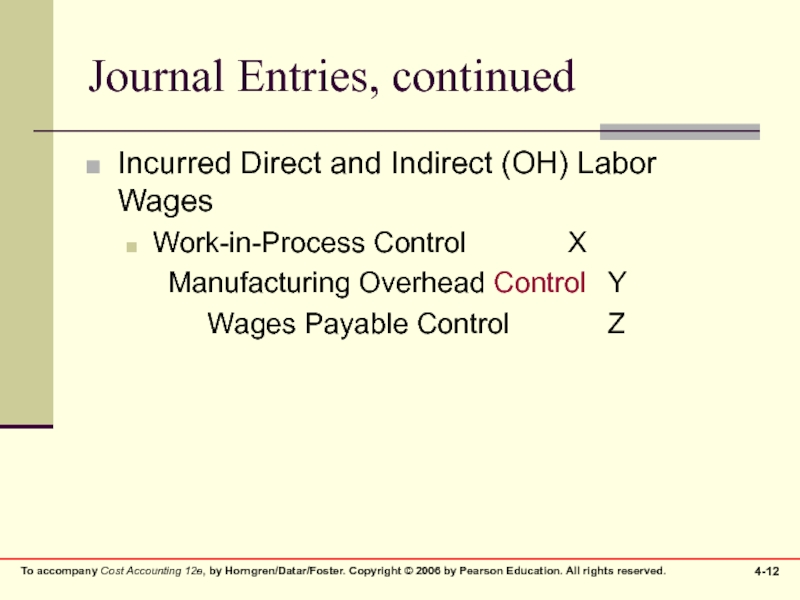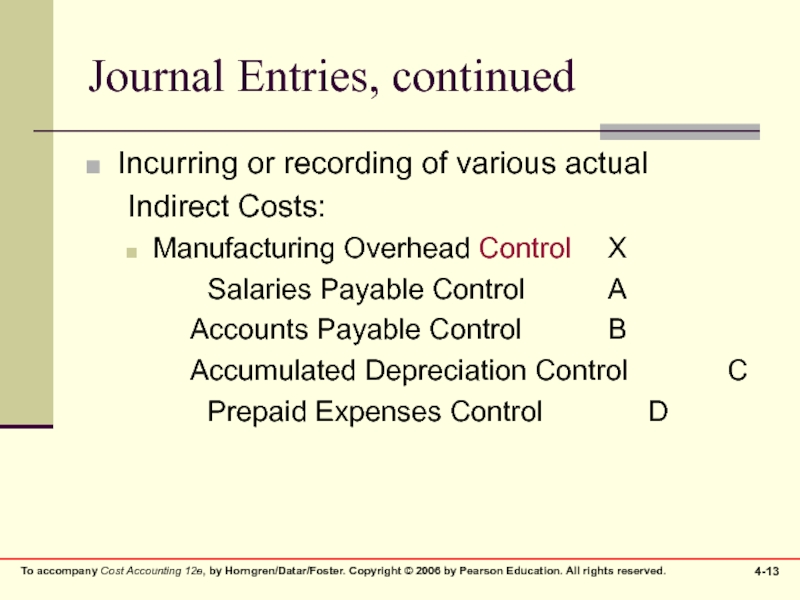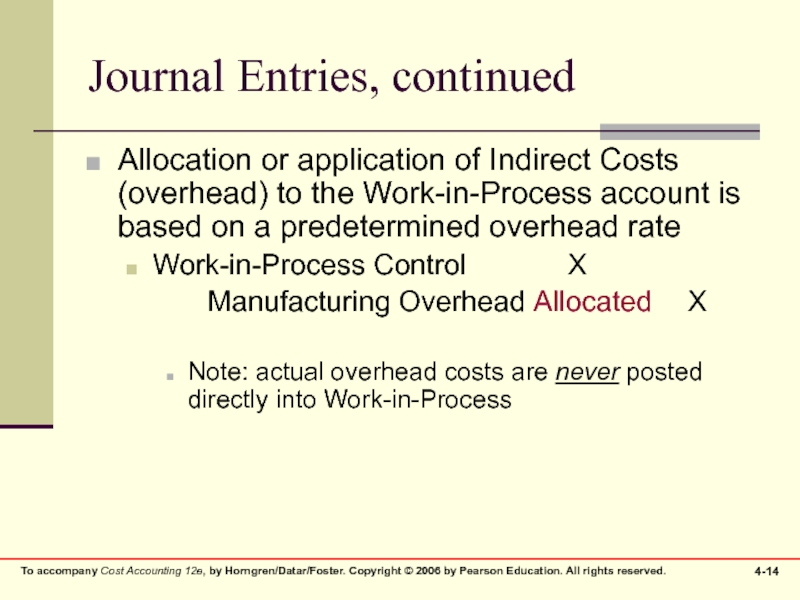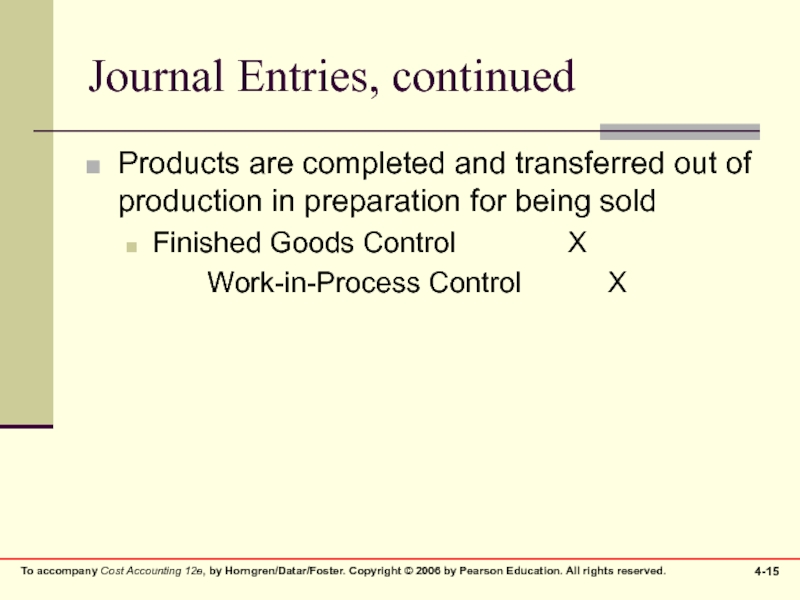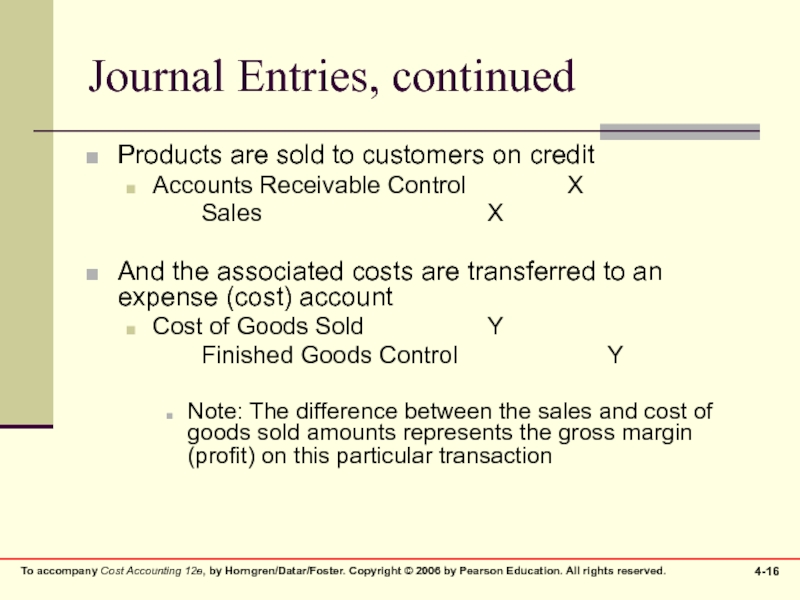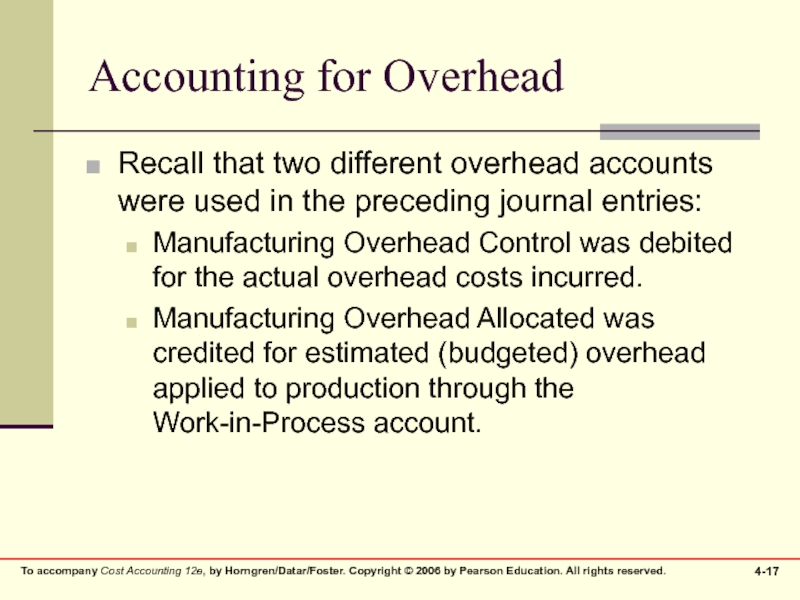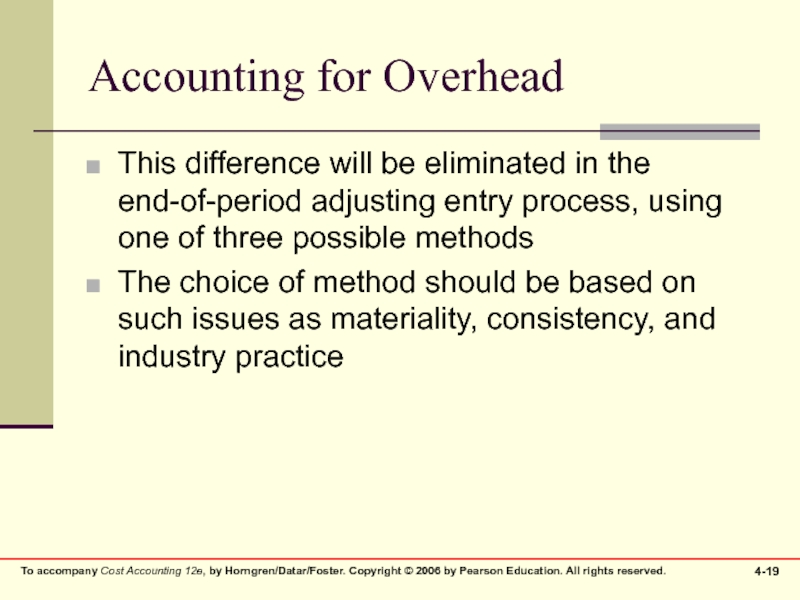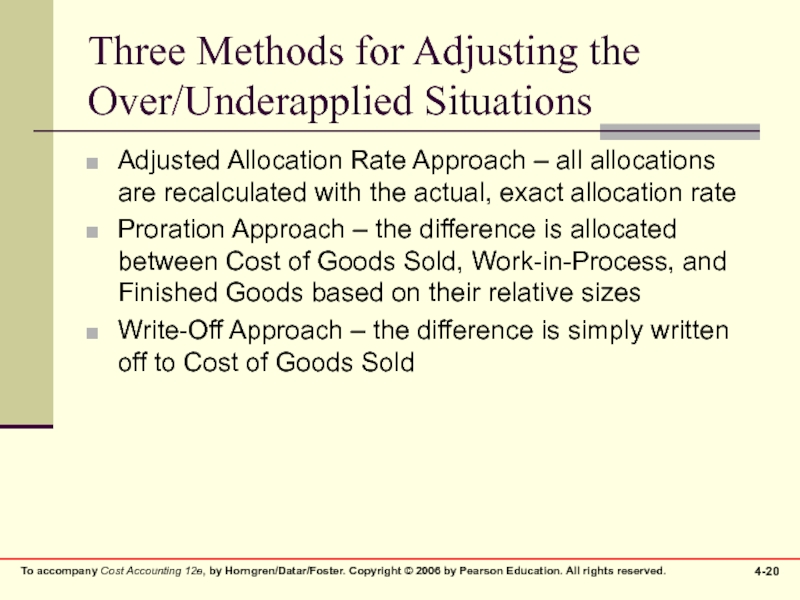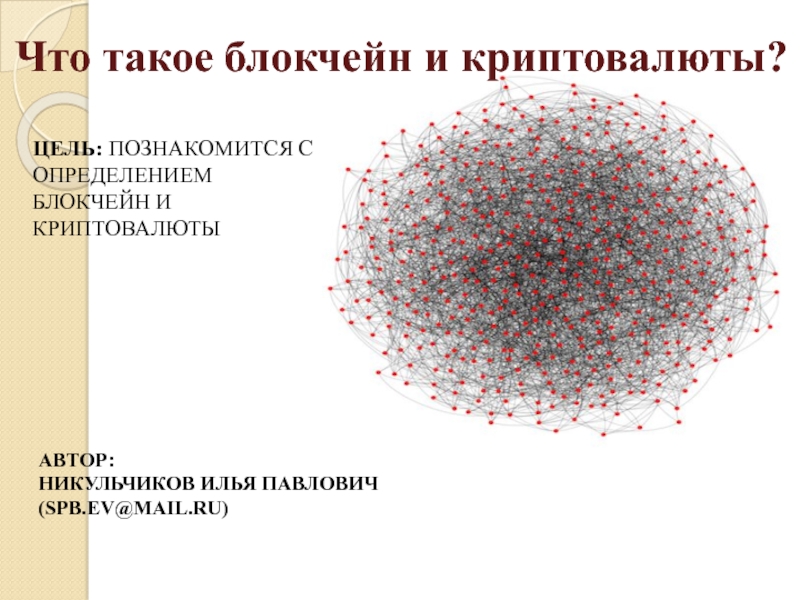- Главная
- Разное
- Дизайн
- Бизнес и предпринимательство
- Аналитика
- Образование
- Развлечения
- Красота и здоровье
- Финансы
- Государство
- Путешествия
- Спорт
- Недвижимость
- Армия
- Графика
- Культурология
- Еда и кулинария
- Лингвистика
- Английский язык
- Астрономия
- Алгебра
- Биология
- География
- Детские презентации
- Информатика
- История
- Литература
- Маркетинг
- Математика
- Медицина
- Менеджмент
- Музыка
- МХК
- Немецкий язык
- ОБЖ
- Обществознание
- Окружающий мир
- Педагогика
- Русский язык
- Технология
- Физика
- Философия
- Химия
- Шаблоны, картинки для презентаций
- Экология
- Экономика
- Юриспруденция
Job Costing презентация
Содержание
- 1. Job Costing
- 2. Basic Costing Terminology… Several key points from
- 3. …logically extended Cost Pool – any logical
- 4. Costing Systems Job-Costing: system accounting for distinct
- 5. Costing Approaches Actual Costing – allocates: Indirect
- 6. Seven-step Job Costing Identify the Job to
- 7. Seven-step Job Costing (continued) Calculate an Overhead
- 8. Job Costing Overview
- 9. Journal Entries Journal entries are made at
- 10. Journal Entries, continued All Product Costs are
- 11. Journal Entries, continued Purchase of Materials on
- 12. Journal Entries, continued Incurred Direct and Indirect
- 13. Journal Entries, continued Incurring or recording of
- 14. Journal Entries, continued Allocation or application of
- 15. Journal Entries, continued Products are completed and
- 16. Journal Entries, continued Products are sold to
- 17. Accounting for Overhead Recall that two different
- 18. Accounting for Overhead Actual costs will almost
- 19. Accounting for Overhead This difference will be
- 20. Three Methods for Adjusting the Over/Underapplied Situations
Слайд 2Basic Costing Terminology…
Several key points from prior chapters:
Cost Objects – including
responsibility centers, departments, customers, products, etc.
Direct Costs and Tracing – materials and labor
Indirect Costs and Allocation – overhead
Direct Costs and Tracing – materials and labor
Indirect Costs and Allocation – overhead
Слайд 3…logically extended
Cost Pool – any logical grouping of related cost objects
Cost-allocation
Base – a cost driver is used as a basis upon which to build a systematic method of distributing indirect costs
For example, let’s say that direct labor hours cause indirect costs to change. Accordingly, direct labor hours will be used to distribute or allocate costs among objects based on their usage of that cost driver
For example, let’s say that direct labor hours cause indirect costs to change. Accordingly, direct labor hours will be used to distribute or allocate costs among objects based on their usage of that cost driver
Слайд 4Costing Systems
Job-Costing: system accounting for distinct cost objects called Jobs. Each
job may be different from the next, and consumes different resources
Wedding announcements, aircraft, advertising
Process-Costing: system accounting for mass production of identical or similar products
Oil refining, orange juice, soda pop
Wedding announcements, aircraft, advertising
Process-Costing: system accounting for mass production of identical or similar products
Oil refining, orange juice, soda pop
Слайд 5Costing Approaches
Actual Costing – allocates:
Indirect costs based on the actual indirect-cost
rates times the actual activity consumption
Normal Costing – allocates:
Indirect costs based on the budgeted indirect-cost rates times the actual activity consumption
Both methods allocate Direct costs to a cost object the same way: by using actual direct-cost rates times actual consumption
Normal Costing – allocates:
Indirect costs based on the budgeted indirect-cost rates times the actual activity consumption
Both methods allocate Direct costs to a cost object the same way: by using actual direct-cost rates times actual consumption
Слайд 6Seven-step Job Costing
Identify the Job to be costed
Identify the Direct Costs
of the Job
Select the Cost-Allocation base(s) to use for allocating Indirect Costs to the Job
Match Indirect Costs to their respective Cost-Allocation base(s)
Select the Cost-Allocation base(s) to use for allocating Indirect Costs to the Job
Match Indirect Costs to their respective Cost-Allocation base(s)
Слайд 7Seven-step Job Costing (continued)
Calculate an Overhead Allocation Rate:
Actual OH Costs ÷
Actual OH Allocation Base
Allocate Overhead Costs to the Job:
OH Allocation Rate x Actual Base Activity For the Job
Compute Total Job Costs by adding all direct and indirect costs together
Allocate Overhead Costs to the Job:
OH Allocation Rate x Actual Base Activity For the Job
Compute Total Job Costs by adding all direct and indirect costs together
Слайд 9Journal Entries
Journal entries are made at each step of the production
process
The purpose is to have the accounting system closely reflect the actual state of the business, its inventories and its production processes
The purpose is to have the accounting system closely reflect the actual state of the business, its inventories and its production processes
Слайд 10Journal Entries, continued
All Product Costs are accumulated in the Work-in-Process Control
account
Direct Materials used
Direct Labor incurred
Factory Overhead allocated or applied
Actual Indirect Costs (overhead) are accumulated in the Manufacturing Overhead Control account
Direct Materials used
Direct Labor incurred
Factory Overhead allocated or applied
Actual Indirect Costs (overhead) are accumulated in the Manufacturing Overhead Control account
Слайд 11Journal Entries, continued
Purchase of Materials on credit:
Materials Control XX
Accounts Payable Control XX
Requisition of Direct and Indirect Materials (OH) into production:
Work-in-Process Control X
Manufacturing Overhead Control Y
Materials Control Z
Requisition of Direct and Indirect Materials (OH) into production:
Work-in-Process Control X
Manufacturing Overhead Control Y
Materials Control Z
Слайд 12Journal Entries, continued
Incurred Direct and Indirect (OH) Labor Wages
Work-in-Process Control X
Manufacturing Overhead
Control Y
Wages Payable Control Z
Wages Payable Control Z
Слайд 13Journal Entries, continued
Incurring or recording of various actual
Indirect Costs:
Manufacturing Overhead Control X
Salaries Payable Control A
Accounts Payable Control B
Accumulated Depreciation Control C
Prepaid Expenses Control D
Accounts Payable Control B
Accumulated Depreciation Control C
Prepaid Expenses Control D
Слайд 14Journal Entries, continued
Allocation or application of Indirect Costs (overhead) to the
Work-in-Process account is based on a predetermined overhead rate
Work-in-Process Control X
Manufacturing Overhead Allocated X
Note: actual overhead costs are never posted directly into Work-in-Process
Work-in-Process Control X
Manufacturing Overhead Allocated X
Note: actual overhead costs are never posted directly into Work-in-Process
Слайд 15Journal Entries, continued
Products are completed and transferred out of production in
preparation for being sold
Finished Goods Control X
Work-in-Process Control X
Finished Goods Control X
Work-in-Process Control X
Слайд 16Journal Entries, continued
Products are sold to customers on credit
Accounts Receivable Control X
Sales X
And the associated costs are transferred to an expense (cost) account
Cost of Goods Sold Y
Finished Goods Control Y
Note: The difference between the sales and cost of goods sold amounts represents the gross margin (profit) on this particular transaction
And the associated costs are transferred to an expense (cost) account
Cost of Goods Sold Y
Finished Goods Control Y
Note: The difference between the sales and cost of goods sold amounts represents the gross margin (profit) on this particular transaction
Слайд 17Accounting for Overhead
Recall that two different overhead accounts were used in
the preceding journal entries:
Manufacturing Overhead Control was debited for the actual overhead costs incurred.
Manufacturing Overhead Allocated was credited for estimated (budgeted) overhead applied to production through the Work-in-Process account.
Manufacturing Overhead Control was debited for the actual overhead costs incurred.
Manufacturing Overhead Allocated was credited for estimated (budgeted) overhead applied to production through the Work-in-Process account.
Слайд 18Accounting for Overhead
Actual costs will almost never equal budgeted costs. Accordingly,
an imbalance situation exists between the two overhead accounts
If Overhead Control > Overhead Allocated, this is called Underallocated Overhead
If Overhead Control < Overhead Allocated, this is called Overallocated Overhead
If Overhead Control > Overhead Allocated, this is called Underallocated Overhead
If Overhead Control < Overhead Allocated, this is called Overallocated Overhead
Слайд 19Accounting for Overhead
This difference will be eliminated in the end-of-period adjusting
entry process, using one of three possible methods
The choice of method should be based on such issues as materiality, consistency, and industry practice
The choice of method should be based on such issues as materiality, consistency, and industry practice
Слайд 20Three Methods for Adjusting the Over/Underapplied Situations
Adjusted Allocation Rate Approach –
all allocations are recalculated with the actual, exact allocation rate
Proration Approach – the difference is allocated between Cost of Goods Sold, Work-in-Process, and Finished Goods based on their relative sizes
Write-Off Approach – the difference is simply written off to Cost of Goods Sold
Proration Approach – the difference is allocated between Cost of Goods Sold, Work-in-Process, and Finished Goods based on their relative sizes
Write-Off Approach – the difference is simply written off to Cost of Goods Sold

